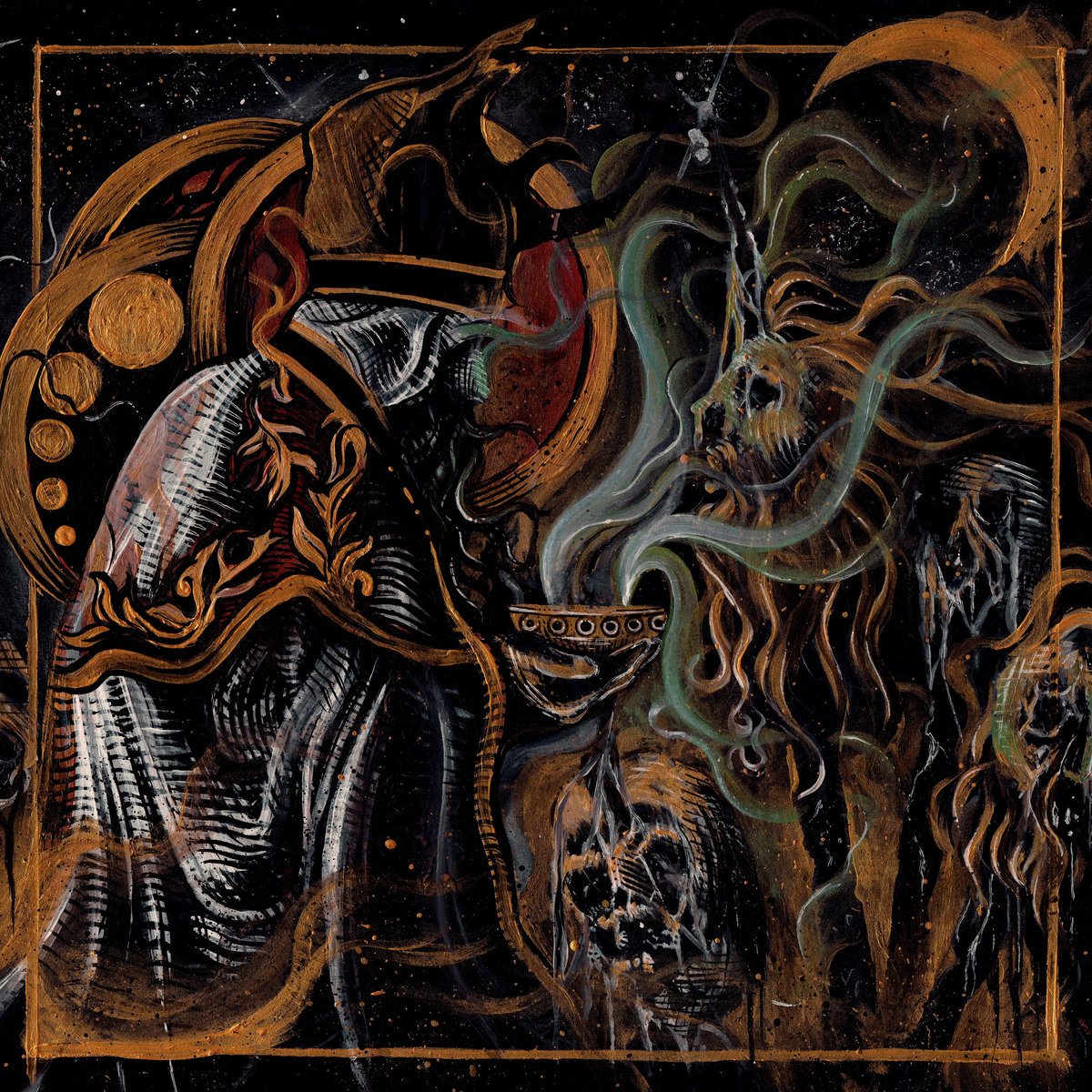
Band: Papngu | Album:Holoceno | Genre: Progressive metal, Zeuhl | Year: 2021
From: João Pessoa, Brazil | Label: Independent
For fans of: Mastodon, Magma, ‘70s King Crimson, Oranssi Pazuzu
Zeuhl and metal are two genres which I’ve long felt would make fantastic bedfellows, but almost every instance of an attempted fusion I’ve found has been lackluster. Magma’s Šlag Tanz EP bills itself as jazz-metal, and that’s not too far off the mark; and the bands ni and PoiL frequently have moments where these two styles merge. Most other attempts at blending zeuhl and metal have come off as muddled, meandering morasses of aimless dissonance and irregular drumming.
Brazil’s Papangu, though, might be the best-realized example of zeuhl metal I’ve run across to date. Holoceno, their debut album, has been seven years in the making, and it tells the story of an environmental apocalypse–something Brazilians would understandably have on their minds.
The album opens with the instrumental “Ave-Bala”. This song’s opening riff is equal parts Blood Mountain and Mekanik Destruktiw Kommandoh, with the percussion of Larks’ Tongues in Aspic. It’s a sludgy, foreboding, and furious introductory track.
“Agua Branca” bursts open with a throbbing, fuzzy, bass-heavy sound, which is balanced against more delicate moments of post-rock-inspired guitar lines. Crashing cymbals of an unusual sonic quality add to the oversaturated sound, and a haunting synthesizer adds a spooky twist in the song’s closing moments.
“São Francisco” incorporates rhythms of Papangu’s native Northeastern Brazil under death metal-inspired guitars. Rhythms and riffs become more complex, overlapping and interweaving with one another. Passages of this song mix a martial drumbeat with frenetic, twisting guitar lines to achieve a near-hypnotic effect.
The opening notes of “Bacia das Almas” immediately convey urgency. The watery guitar effects add an element of artsy post-punk character, and that’s only enhanced by the relatively pared-back instrumentation. Plonking cowbell complements this track’s incessant drive. Out of nowhere, a glimmering, cybertronic synthesizer solo emerges before the song’s final verse. The drumming on this album–provided by Torstein Lofthus of Shining and Elephant9–is nothing short of masterful, and the gradual increase in intensity really drives home the sense of impending doom.
We finally encounter a song which is not just pure aggression out of the gate with “Terra Arrasada”. Murky doom metal gradually fades in. It’s a hazy, mantra-like atmosphere with towering walls of distorted guitar. This track gives me strong flashes of Oranssi Pazuzu’s last release with its abstract riffs and raspy vocals. The song’s quieter moments reveal subtle jazz licks, but they’re soon swallowed up by icy walls of black metal. Around the halfway point, more Brazilian rhythms make an appearance, and the way they’re folded into the metal instrumentation is perfect.
“Lobisomem” opens with an extended fade-in of black metal atmospherics before exploding into pure fury. There’s an askew clean guitar riff that makes a striking impression in the moments between verses, and even a break of bluesy stoner-doom for a few bars before launching into some spacey jazz metal. Seven Impale saxophonist Benjamin Mekki Widerøe makes a guest appearance here, and his contributions add a mournful tenor. Around this song’s midpoint is the most obvious Magma homage yet: skittering snare drum and cosmic ambience recall “Theusz Hamtaahk”. It resolves to a bruising sludge metal passage topped with wailing saxophone.
Holoceno ends on its 10-minute title track. Warbling synth pads and gentle acoustic guitars give the listener their calmest moment on the album. This is about as close to conventional progressive rock as shows up here. When the saxophone enters, it calls to mind a better version of Gilmour-era Pink Floyd. At around five minutes in, though, the song suddenly shifts to a Van der Graaf-y riff led by saxophone and pounded out aggressively on the drums. It feels like a maelstrom is building, and when it finally lands, it does not disappoint. It’s huge, evil, and overpowering avant-garde metal. Tight, technical guitar parts lay the backing for dramatic saxophone and vocal lines. “Holoceno” somehow keeps upping the intensity, bringing the album to a downright-apocalyptic conclusion.
I did not expect to be reviewing two absolutely stellar avant-prog releases back-to-back, but here we are. Papangu effortlessly weaves together avant-garde, sludge, and zeuhl influences into a menacing, murky album. Holoceno is full of dark, twisting guitar lines and absolutely thunderous drums. I was absolutely blown away by this album, and I cannot recommend it enough. I’ve been listening to this on repeat since I first ran across it, and I find new things to love on each listen.
Score: 100/100
One thought on “Album Review: Papangu – Holoceno”